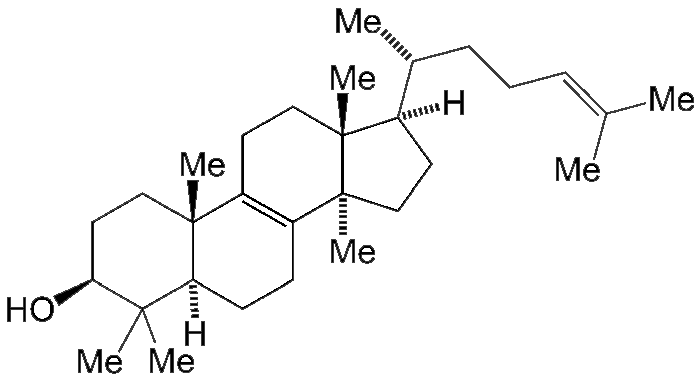

According to the Merck Index, lanosterol is “the core structure from which all others are derived by biological modification”. It has the mysterious alternative name “kryptosterol”.
Lanosterol was isolated from sheep’s wool in 1930 by German researchers A. Windhaus and R. Tschesche. In 1958, Nobel Prize–winner K. E. Block and associates at Harvard University reported its synthesis from isocholesterol. It was subsequently prepared from squalene in 1966 by E. E. van Tamelen and co-workers at Stanford University
Until recently, lanosterol was primarily of historical and biosynthetic interest. But earlier this year, K. Zhang and colleagues at the University of California, San Diego, discovered that lanosterol is involved in the genetics of cataracts in humans. They traced the genetic roots of severe cataracts to a mutation of the gene that encodes lanosterol synthase, one of the enzymes that produce lanosterol.
Based on this finding, Zhang’s group investigated whether lanosterol might be used to prevent cataracts. They found that treating cells that express disordered crystallin proteins with lanosterol reduces the incidence of crystallin clumps that cause cataracts. In early animal studies, administering lanosterol-containing eye drops reduced the severity of cataracts.
Some ophthalmology researchers have challenged the validity of Zhang’s results. Zhang’s group is conducting additional studies to verify whether humans with cataracts will benefit from lanosterol treatment.

Learn more about this molecule from CAS, the most authoritative and comprehensive source for chemical information.
Molecule of the Week needs your suggestions!
If your favorite molecule is not in our archive, please send us a message. The molecule can be notable for its current or historical importance or for any quirky reason. Thank you!
Stay Ahead of the Chemistry Curve
Learn how ACS can help you stay ahead in the world of chemistry.

